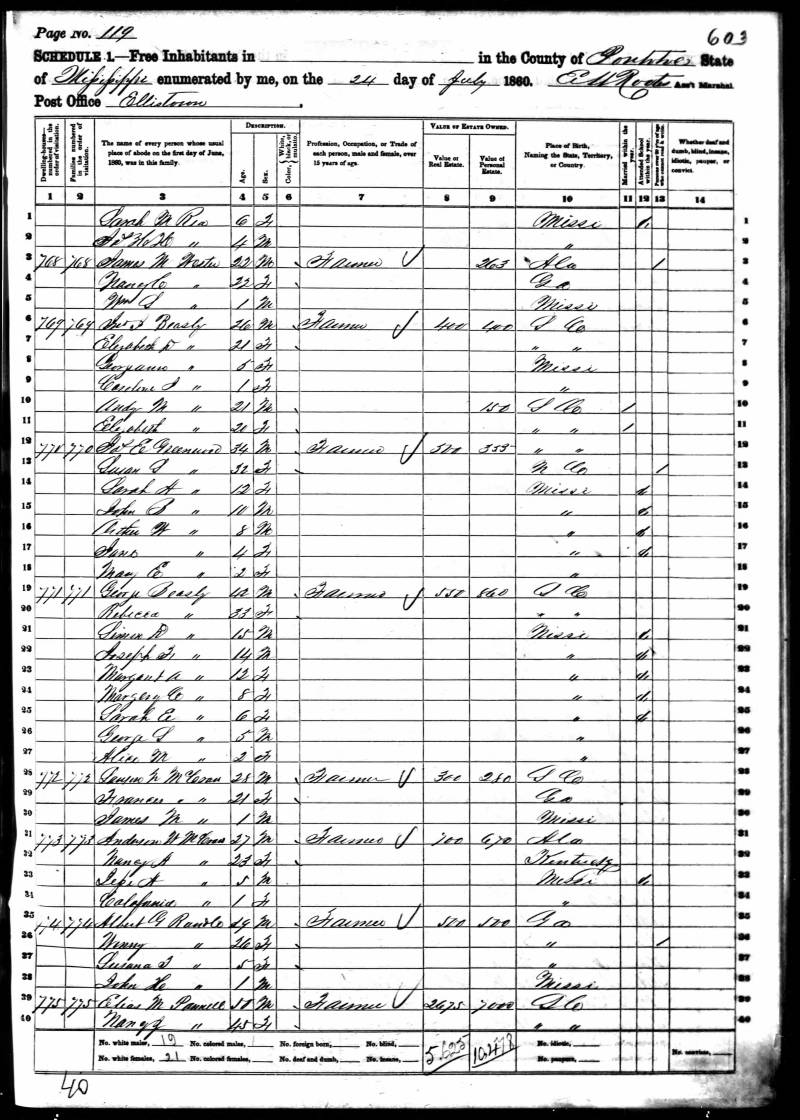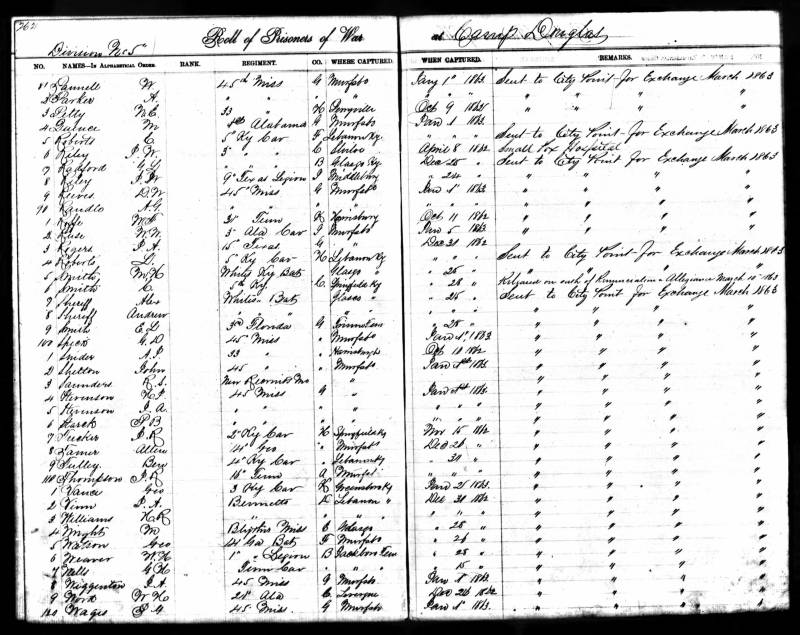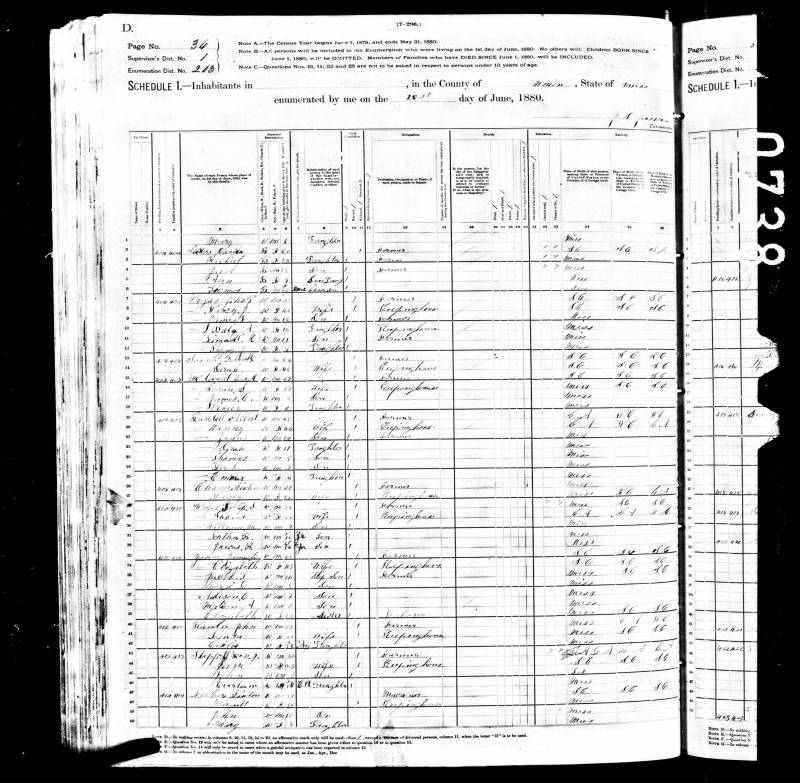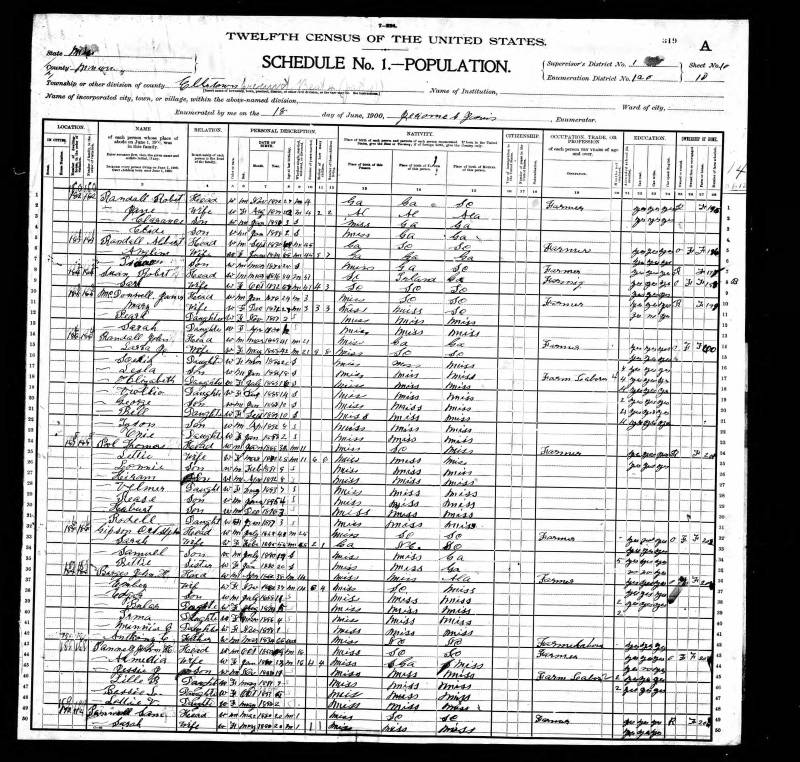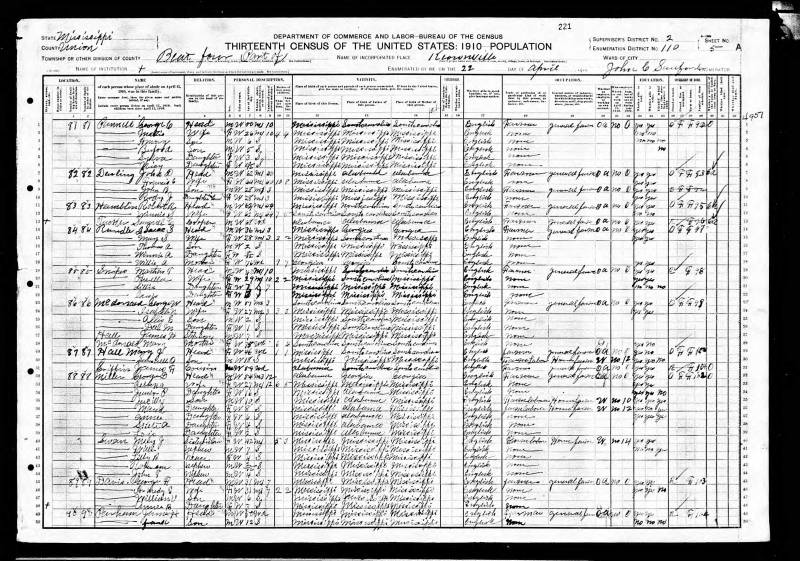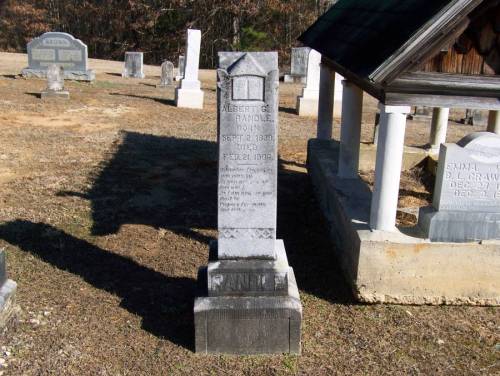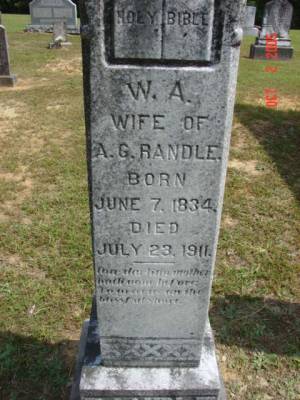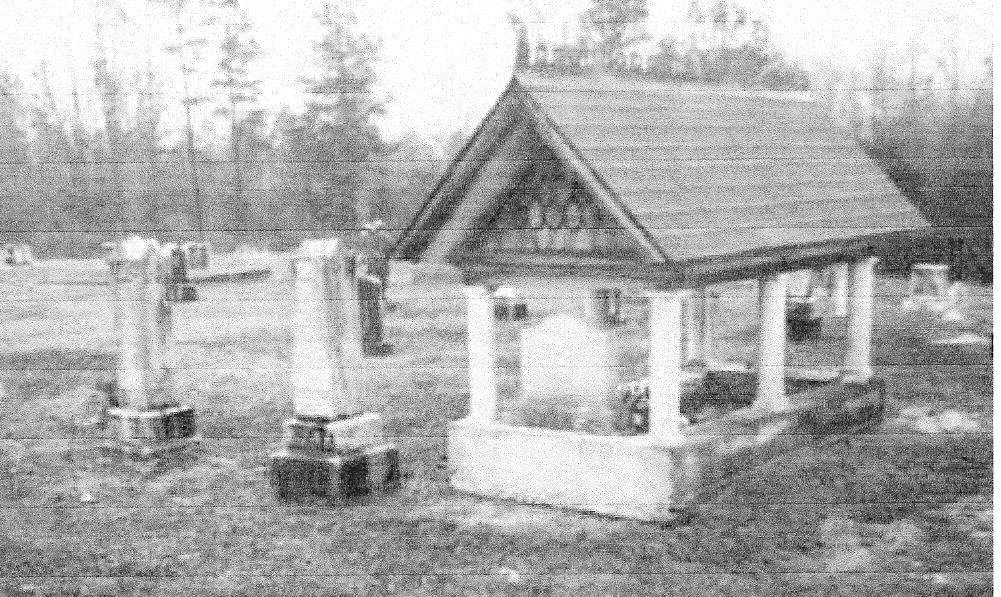This is an old revision of the document!
Warning: Undefined array key 1 in /webroot/r/r/rrandall001/bull-randall.com/www/lib/plugins/note/syntax.php on line 103
Warning: Undefined array key 1 in /webroot/r/r/rrandall001/bull-randall.com/www/lib/plugins/note/syntax.php on line 103
Warning: Undefined array key 1 in /webroot/r/r/rrandall001/bull-randall.com/www/lib/plugins/note/syntax.php on line 103
Table of Contents
Albert Gallatin Randle
[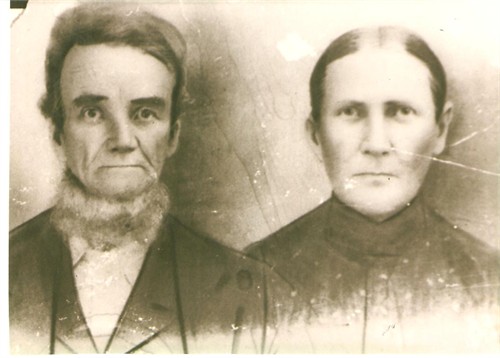 ]Son of Oney Cypress Randal and Susanna(h) “Sukey” W. Wilkins, Albert Gallatin Randle, known to friends and family as Albert, was born on September 2, 1830 in Franklin County, Georgia.
]Son of Oney Cypress Randal and Susanna(h) “Sukey” W. Wilkins, Albert Gallatin Randle, known to friends and family as Albert, was born on September 2, 1830 in Franklin County, Georgia.
While some have speculated that Abert's given name was “John Albert Gallatin Randle”, there are no records to support the addition of “John”.
On Aug. 20, 1854, Albert (age 23) married Winna (Winnie) Angeline Hardy (age 20) in Franklin, County, GA.1)2) Winna Angeline Hardy (born June 7, 1834 in Martin, Franklin County, Georgia),3) was the daughter of Henry W. Hardy (1805 - 1892) & Sarah Isbell (1806 - 1864).
Some time between July 1855 (the birth of their first child) and March 1859 (the birth of their second child), Albert and Winna (Winnie) moved to Union County, Mississippi.
They had the following children:
- John Henry Randle (March 14, 1859 - August 31, 1926 in Union County, MS)6)
- James “Jim” W. Randle (August 25, 1866 in Pontotoc County, MS - May 6, 1918 in Zion Hill, Ms., Prentiss, MS - March 6, 1918)9)
- Infant Randle (Sept. 24, 1868 - Sept. 26, 1868)
- Sarah Lou Randle-Purvis (Oct. 25, 1869 - Oct. 8, 1898)10)
- Thomas Oney Randle (Jan. 17, 1872 - Nov. 25, 1952)11)
- Isaac Samuel Randle (Mar. 1874 - 1929)12)
- Mary Emma Randle-Crawford (Dec. 27, 1876 - Dec. 3, 1915)13)
1860 United States Federal Census
State: Mississippi
County: Pontotoc
Post Office: Ellistown
Date: July 24, 1860
| Name | Age | Gender | Occupation | Birthplace |
|---|---|---|---|---|
| Albert G. Randle | 29 | M | Farmer | Georgia |
| Winny Randle | 26 | F | Georgia | |
| Susana J. Randle | 5 | F | Georgia | |
| John H. Randle | 1 | M | Mississippi |
Note 1: Winnie's name is misspelled in the census as “Winny”.
Note 2: Susan Anna's name is misspelled in the census as “Susana”.
Source: U.S. Census. Year: 1860; Census Place: Pontotoc, Mississippi; Roll: M653_590; Page: 603; Image: 123; Family History Library Film: 803590
The “War of Northern Aggression”
The Mississippi Secession Ordinance was written by Lucius Quintus Cincinnatus Lamar (II), who resigned from the U.S. Congress in January 1861. On January 9, 1861, delegates to the Mississippi Secession Convention met at the Lamar House to vote on the “Ordinance of Secession” (to announce Mississippi's formal secession from the United States of America). The Ordinance was adopted on January 9, 1861, listing the causes leading to the secession.14)
A Declaration of the Immediate Causes which Induce and Justify the Secession of the State of Mississippi from the Federal Union
In the momentous step, which our State has taken of dissolving its connection with the government of which we so long formed a part, it is but just that we should declare the prominent reasons which have induced our course.
Our position is thoroughly identified with the institution of slavery - the greatest material interest of the world. Its labor supplies the product, which constitutes by far the largest and most important portions of commerce of the earth. These products are peculiar to the climate verging on the tropical regions, and by an imperious law of nature, none but the black race can bear exposure to the tropical sun. These products have become necessities of the world, and a blow at slavery is a blow at commerce and civilization. That blow has been long aimed at the institution, and was at the point of reaching its consummation. There was no choice left us but submission to the mandates of abolition, or a dissolution of the Union, whose principles had been subverted to work out our ruin.
That we do not overstate the dangers to our institution, a reference to a few facts will sufficiently prove.
The hostility to this institution commenced before the adoption of the Constitution, and was manifested in the well-known Ordinance of 1787, in regard to the Northwestern Territory.
The feeling increased, until, in 1819-20, it deprived the South of more than half the vast territory acquired from France.
The same hostility dismembered Texas and seized upon all the territory acquired from Mexico.
It has grown until it denies the right of property in slaves, and refuses protection to that right on the high seas, in the Territories, and wherever the government of the United States had jurisdiction.
It refuses the admission of new slave States into the Union, and seeks to extinguish it by confining it within its present limits, denying the power of expansion.
It tramples the original equality of the South under foot.
It has nullified the Fugitive Slave Law in almost every free State in the Union, and has utterly broken the compact, which our fathers pledged their faith to maintain.
It advocates negro equality, socially and politically, and promotes insurrection and incendiarism in our midst.
It has enlisted its press, its pulpit and its schools against us, until the whole popular mind of the North is excited and inflamed with prejudice.
It has made combinations and formed associations to carry out its schemes of emancipation in the States and wherever else slavery exists.
It seeks not to elevate or to support the slave, but to destroy his present condition without providing a better.
It has invaded a State, and invested with the honors of martyrdom the wretch whose purpose was to apply flames to our dwellings, and the weapons of destruction to our lives.
It has broken every compact into which it has entered for our security.
It has given indubitable evidence of its design to ruin our agriculture, to prostrate our industrial pursuits and to destroy our social system.
It knows no relenting or hesitation in its purposes; it stops not in its march of aggression, and leaves us no room to hope for cessation or for pause.
It has recently obtained control of the Government, by the prosecution of its unhallowed schemes, and destroyed the last expectation of living together in friendship and brotherhood.
Utter subjugation awaits us in the Union, if we should consent longer to remain in it. It is not a matter of choice, but of necessity. We must either submit to degradation, and to the loss of property worth four billions of money, or we must secede from the Union framed by our fathers, to secure this as well as every other species of property. For far less cause than this, our fathers separated from the Crown of England.
Our decision is made. We follow their footsteps. We embrace the alternative of separation; and for the reasons here stated, we resolve to maintain our rights with the full consciousness of the justice of our course, and the undoubting belief of our ability to maintain it.
The term “War of Northern Aggression” is used here because that is likely what the war was called by our Southern ancestors (or “War for Southern Independence”). While the term “Civil War” was used by Abraham Lincoln during multiple occasions – and the U.S. Supreme Court (The Brig Amy Warwick, et al., 67 U.S. 635, 636, 673 (1862)) during the war, it is entirely incorrect.
A civil war is a war between citizens of the same state contending for control of the same government. The war between the North and South was the war of the North against a separate government, that as long as it lasted was a de facto nation, exercising all the powers of an independent government. The term “civil war” concedes all that the North ever claimed, makes [the South] guilty of treason, and is untrue to the facts in the case. [The] term “civil war,” while incorrect as a simple definition of the struggle, does a gross injustice to the South by degrading her struggle for a national existence into a partisan conflict. I never use it and mark it out of every book where I find it. Let history tell the truth.
Rev. S.A. Steel, Jackson, Tenn.
Source: “The Phrase “Civil War,” Confederate Veteran, July 1912, pg. 347
Officially, the U.S. Congress used the term “The War between the States” in a report to the Senate on joint resolution No. 41, printed in the Congressional Record of March 2, 1928, on page 4061. However, the National Park Service, the government organization entrusted by the United States Congress to preserve the battlefields of the war, uses the term “Civil War”.
The Conscription Act
On April 16, 1862, the Confederacy—in need of troops to fight in its armies—passed the Conscription Act, the first effective general military draft in America.
When the “War of Northern Aggression” began, the Confederacy had set its volunteers’ terms of enlistment for one year. However, as the year mark neared, it became obvious that the war would last for much longer and that the Confederate armies would need more soldiers. So in April 1862, in a secret session of the Confederate Congress, the Conscription Act was passed, which drafted healthy white men ages 18 to 35 for three-year terms (later acts would extend the ages first to 18 to 45, and later to 17 to 50). The Confederate Congress also extended the terms of those already serving under one-year enlistments for another two years (though the soldiers would effectively serve for the duration of the war).
[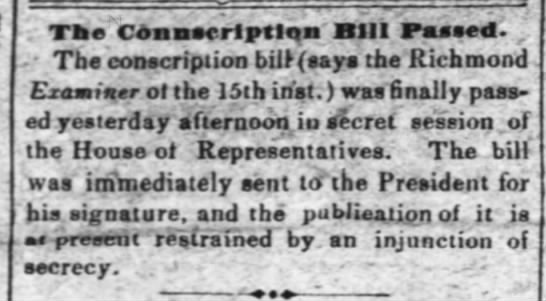 ]
]
The act allowed those drafted to find substitutes to serve in their place (though this would be discontinued in December 1863) and exempted men serving in occupations deemed critical to the war effort or civilian life. In the fall of 1862, exemptions were also extended to those who owned or oversaw 20 or more slaves.
The U.S. Federal government instituted its own draft a year later, in March 1863. The Enrollment Act called on men ages 20 to 45 to register for the draft. As in the South, substitutes were allowed, or else men could pay a $300 commutation fee (though commutation fees were eventually banned in 1864). Like the Confederacy, the U.S. Federal government allowed some exemptions for certain occupations, physical disability, and religious conscientious objectors.
Conscription was partially meant to encourage voluntary enlistment, as those who joined as volunteers were eligible to receive bounty money (enlistment bonuses) from states, counties, cities, and the U.S. federal government—in some cases totaling a sum upwards of $1,000. However, these bounties created the problem of bounty jumping, wherein men would volunteer, collect the money, then desert and re-enlist elsewhere and collect that money as well.
In the Union and Confederacy, conscription was generally a disproportional burden on the poor, since they were unable to pay for a substitute or a commutation fee. But while the draft was hated in both the North and the South, it was only in the North that it sparked riots, the most violent of which killed more than a hundred people—many of them black—in the New York City Draft Riots of July 1863.
Sources:
https://blog.fold3.com/americas-first-military-draft-begins-april-16-1862/
https://www.newspapers.com/clip/4643787/confederate_conscription_bill_passed/
During the “War of Norther Aggression”, Albert joined the Confederate 45th Mississippi Infantry Regiment 15); which was formed during the late summer of 1862 by redesignating Hardcastle's 33rd Mississippi Infantry Regiment.16) The unit was active at Perryville, then joined the Army of Tennessee. Assigned to Generals S.A.M. Wood's and Lowrey's Brigade, it saw action in various conflicts from Murfreesboro to the Atlantic Campaign. This unit lost fifty-three percent of the 217 engaged at Murfreesboro, TN (during the “The Battle of Stones River” aka “Second Battle of Murfreesboro”) where Albert was captured on Jan. 1, 1863. He was sent to City Point for exchange during March 1863.
For a time it was consolidated with the 32nd Regiment, and this command sustained 166 casualties at Chickamauga. In December, 1863, the 32nd/45th totalled 515 men and 387 arms.
On July 14, 1864, it was consolidated into five companies and became the 3rd (Williams') Mississippi Infantry Battalion. Colonel Aaron B. Hardcastle, Lieutenant Colonel Richard Charlton, and Major Elisha F. Nunn were in command. Albert Randle was assigned to Company G. This unit served in General Lowrey's and Sharp's Brigade and fought with the Army of Tennessee from Peach Tree Creek to Bentonville. In the Battle of Atlanta it reported 2 killed, 33 wounded, and 2 missing, and many were lost in Tennessee. The battalion surrendered on April 26, 1865. The field officers were Lieutenant Colonel John D. Williams and Major Elisha F. Nunn.
Albert's rank was “Private” throughout his enlistment.
After the War
Mr. Albert Randle donated land for the old Zion Hill Church, School and Cemetery about 1878. The cemetery was started in July, 1881.
Zion Hill Cemetery is located in Union County, within the District 1 at latitude 34.5193 and longitude -89.0851. The primary coordinates for Zion Hill Cemetery places it within the ZIP Code 38652 delivery area.18)
1880 United States Federal Census
State: Mississippi
County: Union
Date: June 20, 1880
| Name | Age | Gender | Relationship | Occupation | Birthplace |
|---|---|---|---|---|---|
| Albert Randell | 50 | M | Head | Farmer | Georgia |
| Winny Randell | 46 | F | Wife | Keeping House | Georgia |
| James Randell | 14 | M | Son | Farmer | Mississippi |
| Sarah Randell | 11 | F | Daughter | Mississippi | |
| Thomas Randell | 9 | M | Son | Mississippi | |
| Isaac S. Randell | 7 | M | Son | Mississippi | |
| Emma Randell | 5 | F | Daughter | Mississippi |
Note 1: The census misspells “Randle” as “Randell”. Note 2: The census misspells “Winnie” as “Winny”.
Source: U.S. Census. Year: 1880; Census Place: Union, Mississippi; Roll: 666; Family History Film: 1254666; Page: 290D; Enumeration District: 203
1900 United States Federal Census
State: Mississippi
County: Union
Township or Other Division of County: Ellistown
Date: June 18, 1900
| Name | Relationship | Gender | Date of Birth | Age | Occupation | Birthplace | Fathers Birthplace | Mothers Birthplace |
|---|---|---|---|---|---|---|---|---|
| Albert Randall | Head | M | Sep. 1830 | 69 | Farmer | Georgia | South Carolina | South Carolina |
| Angline Randall | Wife | F | June 1834 | 65 | Georgia | Georgia | Georgia | |
| Issac Randall | Son | M | Mar. 1874 | 25 | Farmer | Georgia | Georgia | Georgia |
Note: According to the Census, all of the family could read and write.
Source: U.S. Census. Year: 1900; Census Place: Ellistown, Union, Mississippi; Roll: 830; Page: 10A; Enumeration District: 0126; FHL microfilm: 1240830
Albert Gallatin Randle died on January 21, 1906 (at age 75) in Union, Tippah, Mississippi and was buried at “Zion Hill Baptist Cemetery”.19)
Two years after Albert died, Issac Randle married Sallie Mae (maiden name unknown).
According to the 1910 U.S. Census, Winnie Angeline Hardy Randle then lived with Issac and his family.
1910 United States Federal Census
State: Mississippi
County: Union
Name of Incorporated Place: Keownville
Date: April 22, 1910
| Name | Relationship | Gender | Age | No. Yrs. Married | No. of Children Born | No. of Children Living | Birthplace | Fathers Birthplace | Mothers Birthplace | Occupation |
|---|---|---|---|---|---|---|---|---|---|---|
| Isaac S. Randle | Head | M | 36 | 3 | Mississippi | Georgia | Georgia | Farmer | ||
| May S. Randle | Wife | F | 28 | 3 | 2 | 2 | Mississippi | South Carolina | Mississippi | None |
| Thomas A. Randle | Son | M | 2 | Mississippi | Mississippi | Mississippi | None | |||
| Winnie A. Randle | Daughter | F | 8/12 | Mississippi | Mississippi | Mississippi | None | |||
| Willie A. Randle | Mother | F | 76 | 9 | 7 | Georgia | Georgia | South Carolina | None |
Note 1: The Census taker erroneously recorded Sallie Mae's name as “May S.” Randle.
Note 2: The Census taker erroneously recorded Winnie Angeline Hardy Randle's name as “Willie” Randle.
Note 3: According to the Census, Winnie, Issac & his wife, May, could all read and write.
Source: U.S. Census. Year: 1910; Census Place: Keownville, Union, Mississippi; Roll: T624_761; Page: 5A; Enumeration District: 0110; FHL microfilm: 1374774
Winnie Angeline Hardy Randle died June 23, 1911 (at age 77) in Union, Tippah, Mississippi and was also buried at “Zion Hill Baptist Cemetery”.20)
Lineage
| Name | Line Manager | Job Title | Photo |
|---|---|---|---|
| Albert Gallatin Randle | |||
| Oney Cypress Randal | Albert Gallatin Randle | (1796-1854) Father |  |
| Susannah W. Wilkins | Albert Gallatin Randle | (1800-1874) Mother | |
| John Bull-Randal | Oney Cypress Randal | (1766-1851) Grand Father | |
| Charles Smith Wilkins | Susannah W. Wilkins | (1755-1817) Grand Father |  |
| Elizabeth Puryear | Susannah W. Wilkins | (1775-1837) Grand Mother | |
| James Wilkins | Charles Smith Wilkins | Great Grand Father | |
| Arabella Smith Marrow | Charles Smith Wilkins | Great Grand Mother | |
| Seymour Puryear | Elizabeth Puryear | (1750-1788) Great Grand Father | |
| Sarah Royster | Elizabeth Puryear | (1754-1803) Great Grand Mother | |
| Hanna Harvey | Oney Cypress Randal | (1776-1852) Grand Mother | |
| Thomas Bull Jr. | John Bull-Randal | (1726-1797) Great Grand Father | |
| Sarah Randal | John Bull-Randal | Great Grand Mother | |
| Col. Thomas Peyton Harvey, Sr. | Hanna Harvey | (1740-1806) Great Grand Father |  |
| Sarahann Williams | Hanna Harvey | Great Grand Mother | |
| Thomas Bull, Sr. | Thomas Bull Jr. | (1700-1763) Great, Great Grand Father | |
| Susanna Harwell | Thomas Bull Jr. | Great, Great Grand Mother | |
| Ambrose Harwell | Susanna Harwell | (1686-1739) Great, Great, Great Grand Father | |
| Elizabeth Browne | Susanna Harwell | Great, Great, Great Grand Mother |
